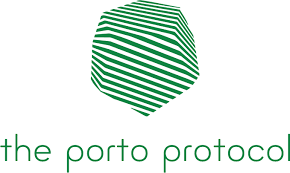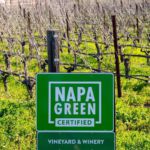
Maximizing Energy Efficiency, Saving Money, and Cutting Carbon Footprint – Views of Anna Brittain (NAPA GREEN)
- PORTO PROTOCOL | (Renewable) Energy Article |
- August 30, 2021
“With great power comes an even greater electricity bill.”
Napa Green is a leading sustainable winegrowing certification in the U.S., and one of only four programs nationwide offering the opportunity for comprehensive sustainability certification in both the Winery and Vineyard. We have 85 Napa Green Certified Wineries and over the past 5+ years we have helped these members save more than 14 million kilowatt hours (kWh) of electricity and over $4 million in energy costs. Here is how we have achieved this, and some of the insights we have gained along the way.
Most wine industry sustainability certifications recommend that wineries do an energy audit, but it is rarely realistic for a winery to do this themselves. The majority of wineries would need to hire a consultant, which is a significant investment. In 2016, realizing that this was roadblock, we designed an “Integrated Resource Audit” – a one-stop energy, water and waste audit led by a facility engineer with more than 30 years of experience in the beverage industry. Since that time, we have facilitated over 160 winery audits.
We baseline and track each winery’s resource use (kWh/case, gallons of water/gallon of wine, diversion percentage) and show them how they measure up relative to their Napa Green peers. “You can’t manage what you don’t measure.” We provide custom recommendations on how they can improve resource efficiency, and if there are any rebate or incentive opportunities, we also connect them with the organizations who can facilitate these savings.
Thinking Systematically
Over the years we have found that it isn’t difficult to get winery teams engaged in improving energy efficiency. That is because the costs are clear – electricity, natural gas, propane are all expensive and these bills add up. However, when it comes to energy it is also important to think about it from a systems perspective. It takes a significant amount of energy to transport, heat, and treat water. While water may be cheap, the price is much higher when you consider water’s embedded energy cost. Anything a business does to save energy and water and reduce waste is all climate action, reducing their carbon footprint.
Reducing Your Bottom Line
Often, when vintners are considering Napa Green Winery certification, they are worried about high costs, assuming they will need to purchase and install new technology. In fact, we are focused on helping them save money and reduce their bottom lines. Many of the biggest opportunities aren’t shiny or sexy – during the Resource Audit much of our focus is on awareness, training, monitoring, and maintenance. One foundational example, which may not be true the world over, is that here in California there are different electricity rates/tariffs based on the type and timing of operations. While these rates should be reviewed annually, this is not on the radar screen of most wineries. As we have helped wineries to review their rates, we have identified dozens of rate change opportunities where a simple paperwork signature saves thousands (for a few larger wineries even tens of thousands) annually by shifting to the optimum rate.
Additional examples:
- We have found that wineries that turn back their hot water temperature to 120-140° F when higher temperatures of 160-180° F are not needed for tank, barrel and bottling line sanitation typically save thousands of dollars a year on natural gas.
- Proper machinery maintenance, such as checking scaling on evaporative condensers and proper settings, can both improve efficiency and increase the life of equipment.
- We have seen many wineries with high nighttime base loads that they weren’t aware of – often there is equipment cycling on and off at night that doesn’t need to be active.
- Something as simple as putting insulation around a glycol tank provides a notable gain in efficiency.
- When it does come to installing new equipment there are often opportunities with a rapid return on investment. For instance, installing a Variable Frequency Drive on glycol pumps typically has an ROI of 6-18 months.
Don’t “Solarize” Your Inefficiencies
Installing your own solar array is a serious investment – both in cost and footprint. Energy efficiency and renewable energy often get conflated. In many instances, wineries install a solar array without first maximizing their energy efficiency (a much more affordable investment than solar). It is critical to ensure your operation is as efficient as possible before considering a solar array – this reduces the capacity of array needed to offset energy use, the area that the array has to cover, the amount of machinery that has to be maintained, all of which maximizes the financial investment. As Matthew Crafton, winemaker for Chateau Montelena, has noted, “Solar is glamorous, but it’s pushing the green ‘easy’ button. Real savings come in the details.”
Impressively, nearly half of our certified wineries have their own solar arrays. As we began doing the Resource Audits we were surprised to find how many wineries weren’t monitoring their arrays to make sure they were operating as designed and quickly catch any maintenance issues. Most solar arrays these days are tied to an online monitoring portal. Our first recommendation is that someone login minimum monthly to track performance relative to design projections. The most common issue we have seen are inverter failures – this has happened at probably half of our member’s arrays. If these failures aren’t caught and repaired quickly a winery can lose some or all of their solar production for several months. Here in California businesses with solar only receive a once annual “True-Up” bill for any electricity they use from the grid. We have seen too many of our members receive a True-Up bill for $10-20-30,000 more than they expected because they didn’t catch an inverter failure. Again, awareness and monitoring are essential.
Green Teams & Reinvesting Savings
We require that our Napa Green Wineries have a “Green Team.” For small wineries this may just be two or three people – the winemaker, facility manager, and lead purchaser for instance. There have to be team leads committed to ongoing data tracking, acting on this feedback, and working with the rest of the staff to ensure ongoing implementation of the certification standards and continuing improvement. The operations where we have seen the most success in improving resource efficiency have:
- Engaged their teams
- Let them know current performance
- Shared the targets for reducing energy, water and/or waste
- Asked for team suggestions and ideas
- Acted on this input
- Provided regular feedback on progress toward achieving goals
As one example, you can read about what was achieved at St. Supéry Estate.
Finally, as you realize and track energy savings, we recommend that the money saved be dedicated to reinvestment in ongoing improvement. After all, “Sustainability is a journey, not a destination.”
You can learn more about Napa Green and see our members at NapaGreen.org.
An Article By Anna Brittain
Executive Director, Napa Green
Anna has worked locally, nationally and internationally on environmental management and policy with organizations ranging from the environmental economics think tank Resources for the Future in Washington, DC to the International Union for Conservation of Nature in Hanoi, Vietnam.
She has spent a decade facilitating and growing sustainability in the wine industry, with an expertise in communications and certification standards. She has helped lead the growth of the Napa Green program for over six years, and stepped into the position of Executive Director of the now independent non-profit in fall 2019.
Anna has a Master’s of Environmental Science & Management from the Bren School at UC Santa Barbara and a BA in Political Science and Environmental Studies from Williams College.
Making the commitment to third party certification takes time and effort, but it is worth it to demonstrate our commitment to the community and to protect our watershed, our land and the air we breathe.
- Susan Boswell, Chateau Boswell Winery


